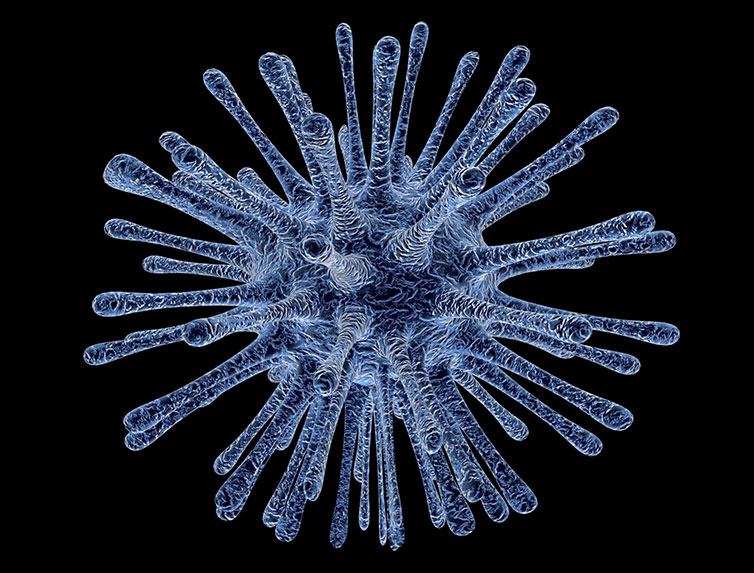Resources
 Part of the Oxford Instruments Group
Part of the Oxford Instruments Group
Expand
Collapse
 Part of the Oxford Instruments Group
Part of the Oxford Instruments Group
Challenge Background
While we have learned how to exploit viruses within molecular biology e.g. for use as vectors, recent pandemics such as SARS, MERS and covid-19 only help to highlight the importance of further research within this field. Study of viruses was for many years quite limited. Imaging was restricted to electron microscopy as the size range of viruses is in the order of 20 to 250nm- below the resolution limit of conventional light-based microscopy. However, recent imaging technologies such as super-resolution, and highly sensitive “single-molecule capable” Electron Multiplying CCD (EMCCD) cameras, allow a much broader range of studies using fluorescent labels. By fluorescently tagging or immunolabelling viral proteins, we can image single virus particles, or population dynamics during the viral life cycle using techniques such as SIM and dStorm.

Technology Solution
Electron Multiplying CCD (EMCCD) camera technology is the leading detector solution used for studying weak fluorescence signals. Combining single photon sensitivity with > 90% Quantum Efficiency, EMCCD cameras provide the level of sensitivity that is required to detect and track the inherently low emission signals from fluorescently labelled viruses within living cells.
Andor camera solution of imaging labeled viruses
Andor strongly recommend the iXon Life EMCCD camera for these studies in which the ultimate photon sensitivity is required. iXon Life features accelerated readout rates and can be combined with ‘Optically Centred Crop Mode’, so that even dynamic events can be characterized with exceptional spatiotemporal resolution. The 13μm pixel of the 888 model provides the best possible photon collection efficiency which is vital for imaging and tracking viruses in live cells.
| Key Requirement | Imaging Viruses in Live Cells |
| Detect weak signals of fluorescently labelled viruses and exclude background noise events | Single Photon Sensitivity and negligible read noise floor combine with > 90% QE to capture and register the majority of incident photons. Minimal thermal noise and Clock Induced Charge (Spurious Noise) results in the superb separation of background noise. < 0.2% probability of noise events occurring in a single pixel. Result – Enhanced detection of even single labelled virions. |
| Track dynamic events with virus life cycle | iXon Life 888 is the fastest EMCCD detector available, reading out at 93 fps at 512 x 512 and 26 fps for the full 1024 x 1024 array. Further acceleration is possible using user-defined sub-arrays, exceeding 600 fps from a 128 x128 sub-array. Result – Achieve superb spatiotemporal resolution of events such as endosomal trafficking or cell lysis. |
| Resolve single virions and spatial positions from cell attachment, penetration, uncoating, replication, assembly through to release of virus particles. | The 13µm pixel of iXon Life 888 delivers superb single molecule resolving capability at the diffraction limit, while preserving optical photon collection efficiency. A superb Charge Transfer Efficiency means < 0.07% probability of a photon event spreading to a neighbouring pixel. Result – Confident resolution of spatial positioning or even weak fluorescent tags within endosomes. |
| Record accurate physiology | Exceptional sensitivity means lower exposures for less phototoxicity or photobleaching, preserving accurate host cell physiology. Result – Obtain accurate physiological data for the process under study. |
| Long term reliability | iXon Life features an exclusive permanent sealed sensor chamber providing the best possible long-term camera reliability. |
References
